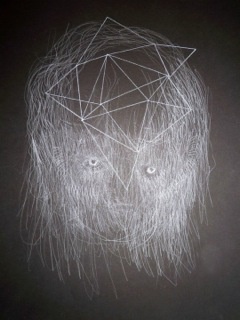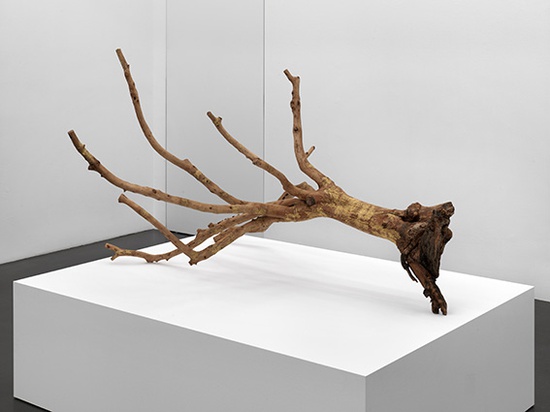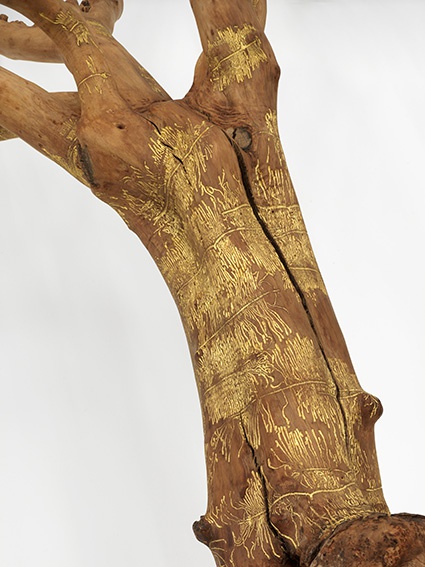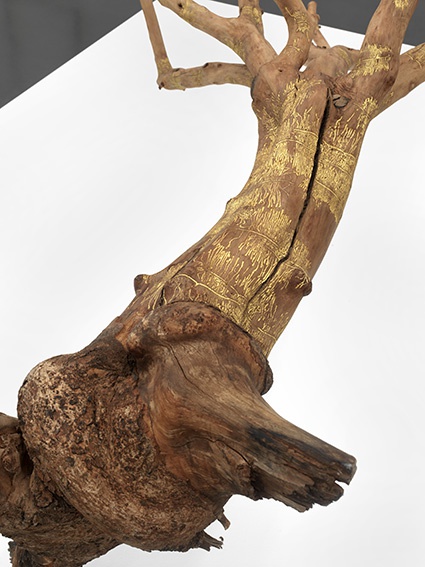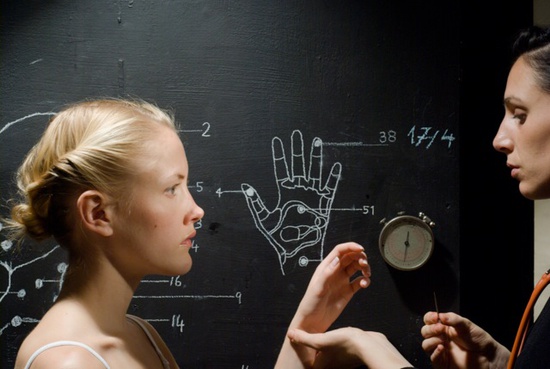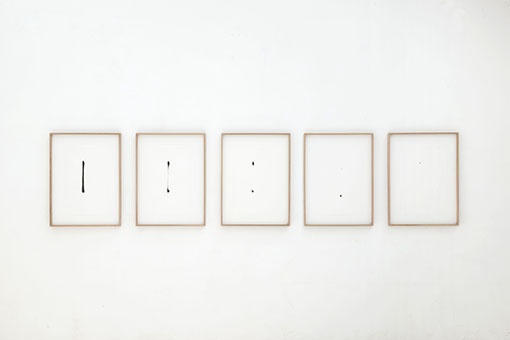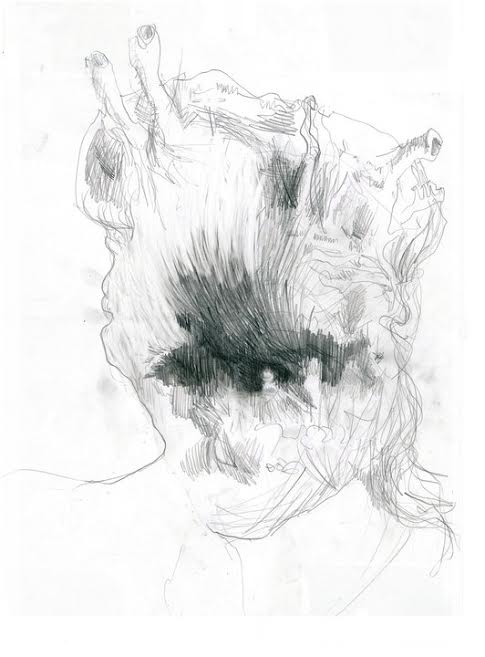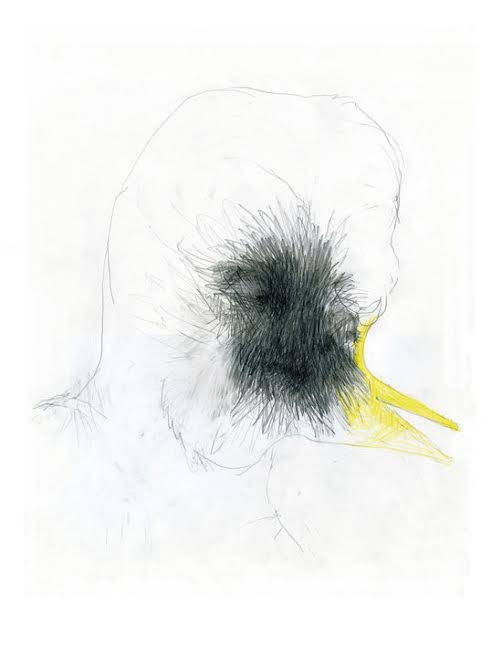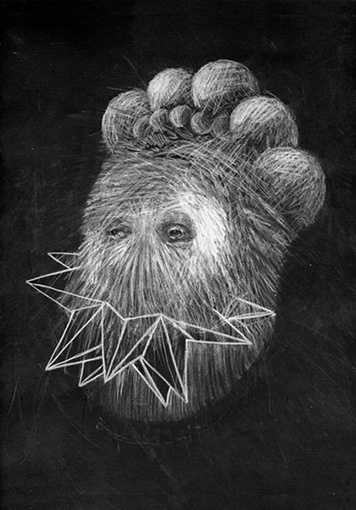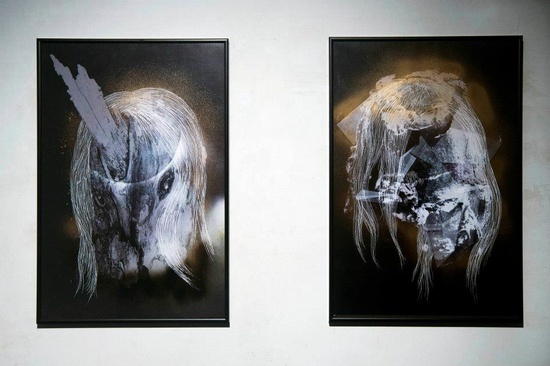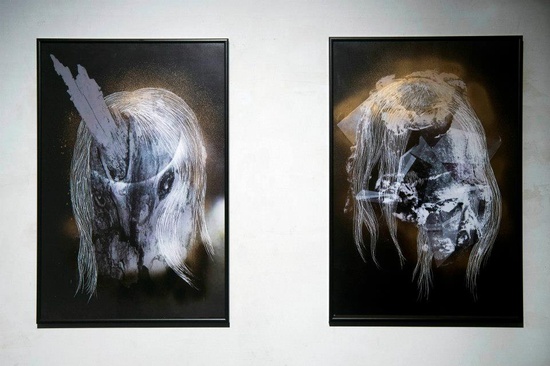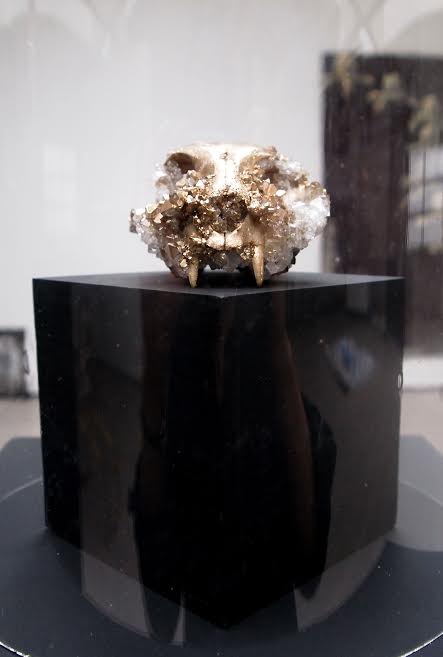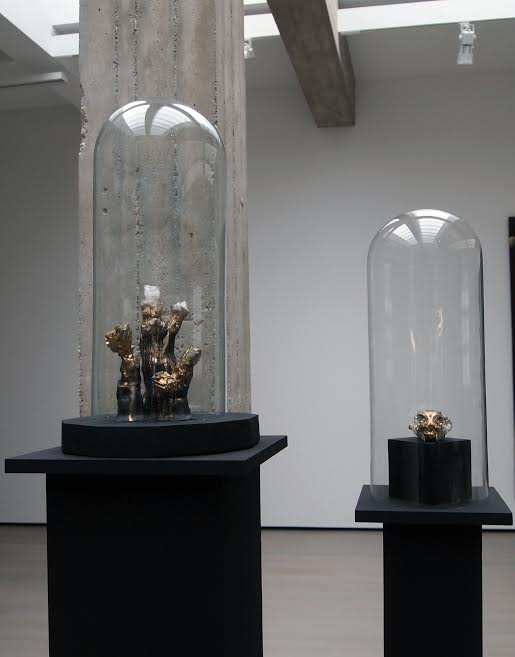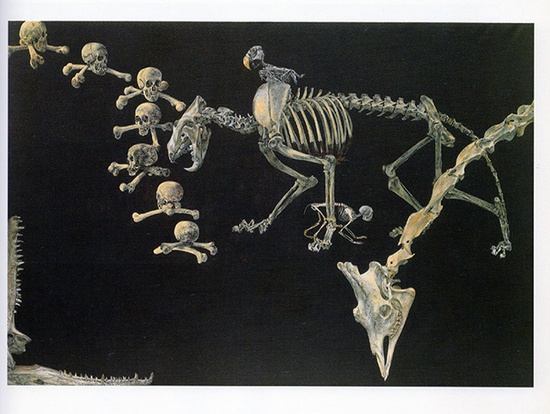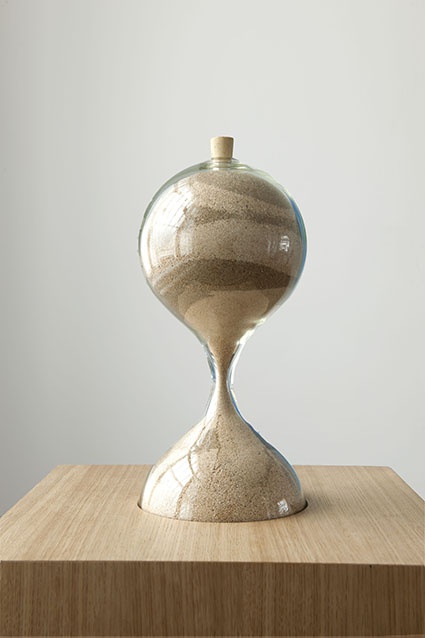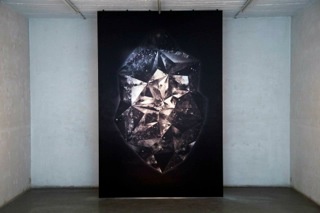ExhibitionDistance to Zero
Tekst: Hans van der Ham en Yasmijn Jarram
Distance to Zero is a group exhibition about ‘la condition humaine’: the fate of mankind. Participating artists have thermalized vulnerable man in relation to his environment. Their work is an attempt to get to grips with the unfathomability of man’s existence. Distance to Zero reveals life as a process of transformation.
The six artists, each in their own way, have tried to get closer to the origin of life. This is comparable with alchemists in bygone days who believed in the existence of the philosopher’s stone: a substance thought capable of changing ordinary metals into gold. The stone is also sometimes described as the potion of eternal youth, thought to possess rejuvenating and life-extending properties.
For ages the main objective of Western alchemy was to manufacture the philosopher’s stone. The search for this universal key to existence was, however, more important than finding it; it was above all about personal development. The alchemists weren’t seeking power or riches, but enlightenment and immortality. It is also this inner process that counts for the artists participating in Distance to zero.
In Distance to zero the ‘condition humaine’ first becomes clearly visible in the 16-mm video-works of Reynold Reynolds. His typical film-language is based on transformation, consumption and decay. Reynolds integrates scientific methods into his filming activities by subtly altering everyday elements and studying the effects achieved. One by one, he changes the variables of reality in order to reveal the underlying connections.
Transformation also plays a role in Fia Cielen’s animal sculptures. Her owls, crows and cats are gradually overgrown by crystals, as a result of which they are in a constant state of metamorphosis. Cielen’s work is a melting pot of such opposites as death and life, dark and light, art and nature. Fabrice Samyn is also involved in transformation, mainly in relation to time. He translates historic portraits according to our modern eye, thereby bringing the past and the present onto the same wavelength.
Zeger Reyers has a fascinating way of interfering with nature. His method sheds light on the manipulative nature of the age in which we live. Where nature and culture encroach upon one another, our perception alters and we suddenly find ourselves wrong-footed. The work of Erik Andriesse, with his images of flowers, skulls and the skeletons of animals, can be seen as a contemporary vanitas. Graciously, and with enormous sensitivity, he reflects upon the tragedy of the condition humaine.
Erzsébet Baerveldt’s moving video, Piëta – also a classic theme – tries to get a grasp on life and mortality. The inability of a woman to bring a doll to life is reminiscent of the Jewish legend of the Golem: a servant that man made from clay, who eventually sought revenge because of his frustration about lacking autonomy and not having a soul of his own.
Similarly to this ancient story and the physical science of alchemy, the Distance to zero exhibition leads to astonishment and anxiety about man’s existence, about suffering and decay, about life and death.

